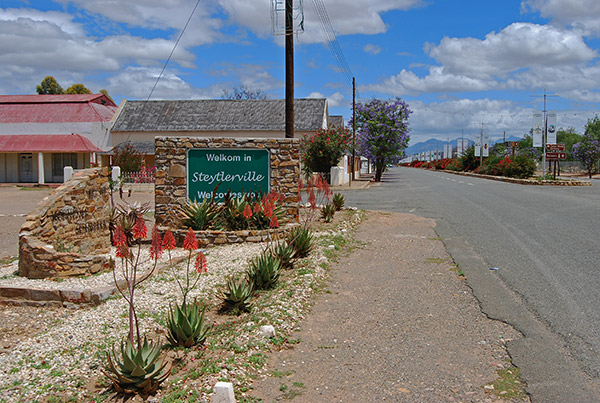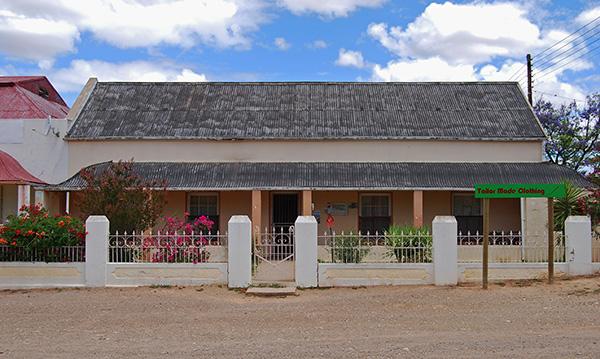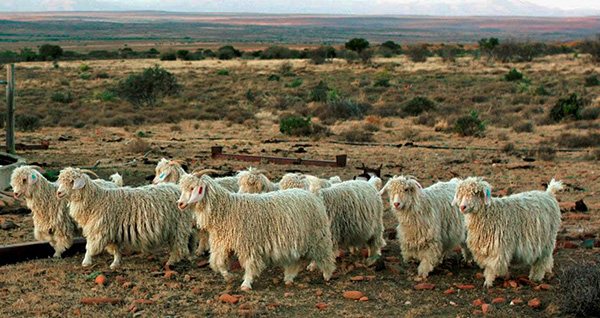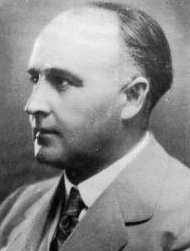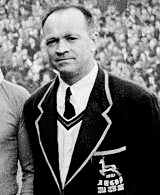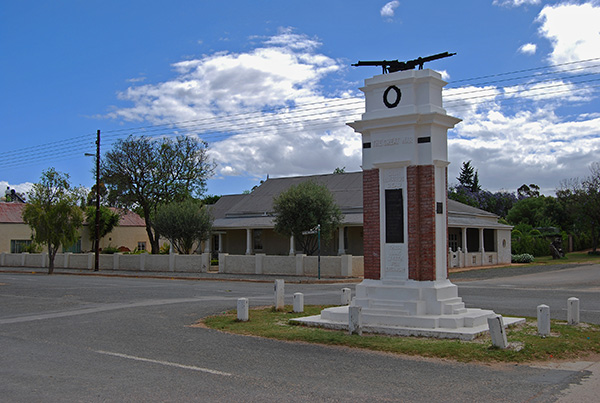Steytlerville
Steytlerville
Steytlerville lies on the southern fringes of the Great Karoo between the rugged Baviaanskloof Mountains to the south and the Grootrivierberge, or Big River Mountains, to the north. The village is located on the banks of the Groot River which ultimately flows in the Gamtoos River through a steep gorge in the Baviaanskloof Mountains. To the east of the village the distinctive Cocks Comb in the Baviaanskloof Mountains is the highest peak in the area at 1758-metres above sea-level.
The village is situated on the R329 road linking Uitenhage and Port Elizabeth to the east with Willowmore and beyond to the Klein Karoo in the west. North of Steylerville a gravel road connects the village with the isolated hamlet of Mount Stewart and beyond to Klipplaat and Jansenville.
Steytlerville and the surrounding Baviaans District encompasses three converging biomes including valley bushveld, fynbos and Karoo. This diversity provides habitat for more than 200 species of birds and the district is a very popular destination for bird watchers and botanists. The area boasts an astonishing variety of semi-desert vegetation including succulents and the surrounding mountains host some of the best preserved highly-endangered cycad habitat left in South Africa.
The environs of Steytlerville are also the home of some of the largest earthworms in the world, some measuring up to two metres in length.
Steytlerville’s Piet Retief Street is festooned with the family crests of many of its residents amidst the brilliant colours of the bougainvillea planted down the central median of the street.
This initiative began around 2005 and sought to honour the residents of the village by displaying their family crests along the main street.
Although the tradition of heraldry was well known in the White Community it was unknown in the African and Coloured communities.
This however was seen as an opportunity rather than a challenge and all those who did not have family crests were encouraged to participate by relating what their forefathers had done and this was then incorporated into new family crests for these residents.
Thus some of the family crests displayed incorporate baking tins, cotton reels, rugby and soccer balls, sheep-shearing shears, shopping baskets and grapes – for a resident whose father drank rather more than he should have, amongst others.
This is probably one of the only places in the World where the presence and contribution of its local residents has been honoured in this way.
In the tranquillity of a small Karoo village the art of stoep-sitting, literally sitting on one’s veranda, and watching the world go by, has been developed to a fine art. The village showcases a host of architectural gems including quaint Edwardian and Victorian-era houses with tin roofs and large street-facing verandas complete with broekie lace and stained glass windows. If one ambles along any of the broad streets in Steytlerville, and indeed in many other Karoo villages, you will find the locals peacefully sitting on their verandas enjoying the passing parade of friends and neighbours, often whilst enjoying a mug of coffee and a roosterkoek. Later in the day coffee is often replaced with a glass of wine, great conversation and the enjoyment of another fine Karoo sunset.
Steytlerville is sheep farming and Angora goat country. Collectively the annual mohair clip in South Africa is about two million kilograms and the country produces about half of the world’s total production. The Angora goat arrived in South Africa from Turkey. The Turkish Sultan sent twelve neutered rams and one female to Port Elizabeth in 1838. The rams were neutered as the Sultan wanted to protect Turkey’s powerful mohair industry. What he did not know was that the ewe was pregnant and gave birth to a kid ram en-route to Port Elizabeth and thus the mohair industry in South Africa was born.
The celebrated poet and medical doctor A.G. Visser practiced in Steytlerville between 1909 and 1916. A.G. Visser was published at age eighteen in Ons Kleintji. He twice won the prestigious Hertzog prize for literature, for both his first and second anthologies. His writings were notably simple and musical, making use of traditional verse forms such as the rondeel, intertextual references and techniques such as the switching of idioms, epigrams and spellings. Visser was musical and conducted the choir during Sunday morning services. Whilst the Minister was delivering his sermon he would slip out to consult with his patients and slip back just in time to lead the choir in the closing hymn.
South African rugby legend Danie Craven is also is connected with Steylerville. Craven was married to the local Bayera Hayward at the Steytlerville Town Hall. During his tenure as Springbok Captain he played a game for Steytlerville against Willowmore. He mentioned it as one of the hardest games he ever played. Onlookers kept telling the players to "give the ball to Craven" and of course, he was tackled into the hard playing field constantly by all 15 Willowmore opponents. Craven captained the Springboks during their golden era as masters of world rugby in the 1930s and served with distinction during World War II. For many years he headed up South African rugby serving between 1956 and 1993 for an unbroken period of 37 years.
An open air museum at the northern end of Piet Retief Street exhibits farming implements and late nineteenth and twentieth century every day home equipment. Most of the exhibits on display were donated by local farmers. The Steytlerville Museum is a small community run museum established in 1967 which houses the history of settlement in the Steytlerville area. The museum includes clothes, house implements and memorabilia. The museum focuses on the history of the town and the surrounding farming communities and also includes artefacts from the Anglo Boer War.
The Dutch Reformed Church in Steytlerville is the biggest Edwardian era church in Southern Africa, seating 1200 congregants. Construction of the building commenced in 1906 and the church was consecrated in 1907 at a cost of £16 000. The church features a remarkable pipe organ with 1046 pipes.
The Steytlerville War Memorial stands in the middle of the road on the corner of Middelton and Piet Retief Streets. The monument was built in 1925 and pays homage to the Steytlervillers who died in the First World War between 1914 and 1918. The names of those who perished in the Second World War were added to the monument and altogether eleven Steylervillers are inscribed on the memorial, having paid the supreme sacrifice in the service of their country.
The Karoo means ‘great thirst’ in the Khoi-San language. With very little rain, intensely hot summers and cold winters, the Steytlerville region is a broad expanse of open plains broken only by flat-topped kopjes and on its perimeter, by rugged mountains whose overhangs are filled with San rock art.
The once prolific wildlife is making a comeback as local farmers stock their farms with kudu, wildebeest, zebra and impala. With greater protection smaller antelope species such as common duiker, steenbok, klipspringer and grysbok are increasing in number.
Clear skies and a lack of light pollution are ideal for beautiful evenings of stargazing and some awe inspiring sunrises and sunsets.

